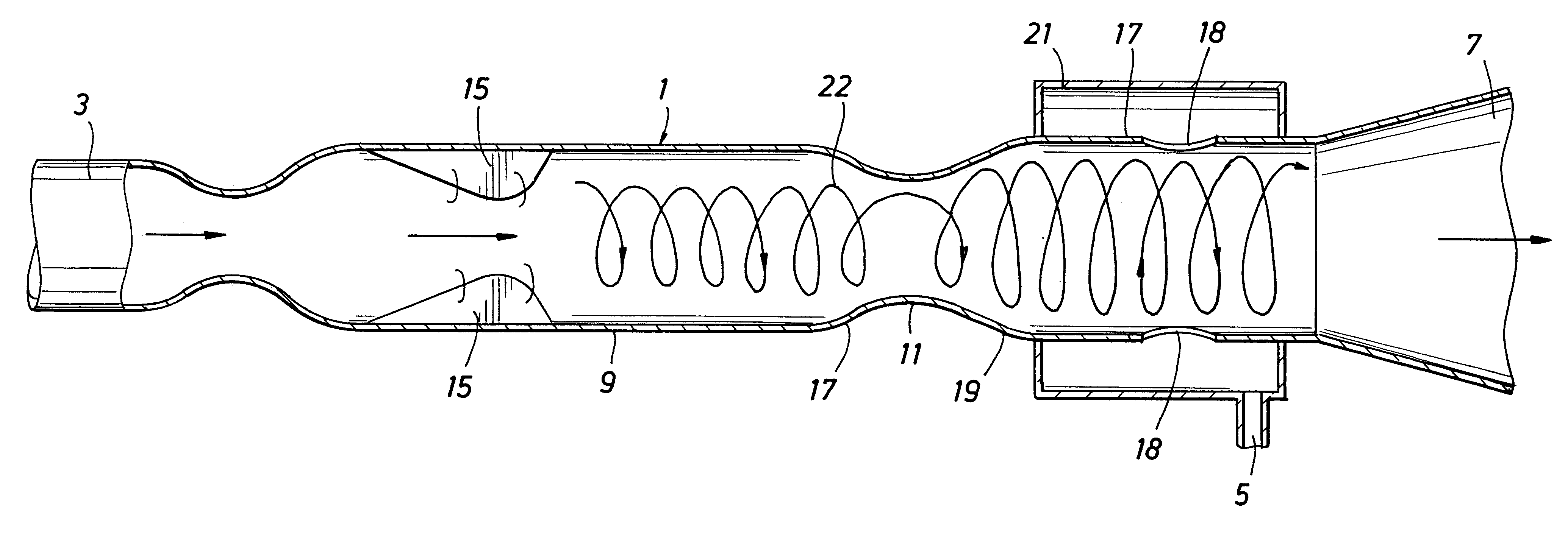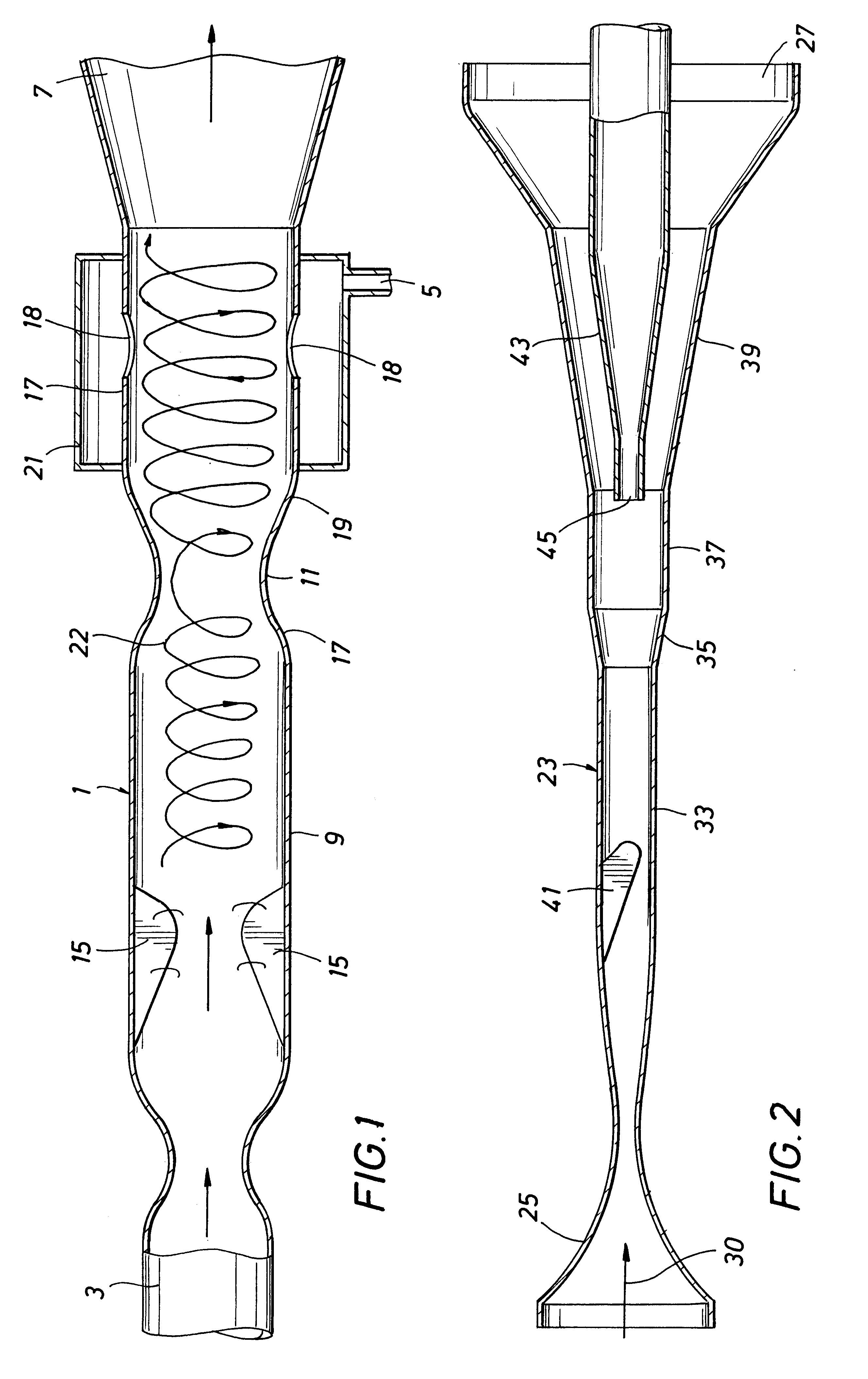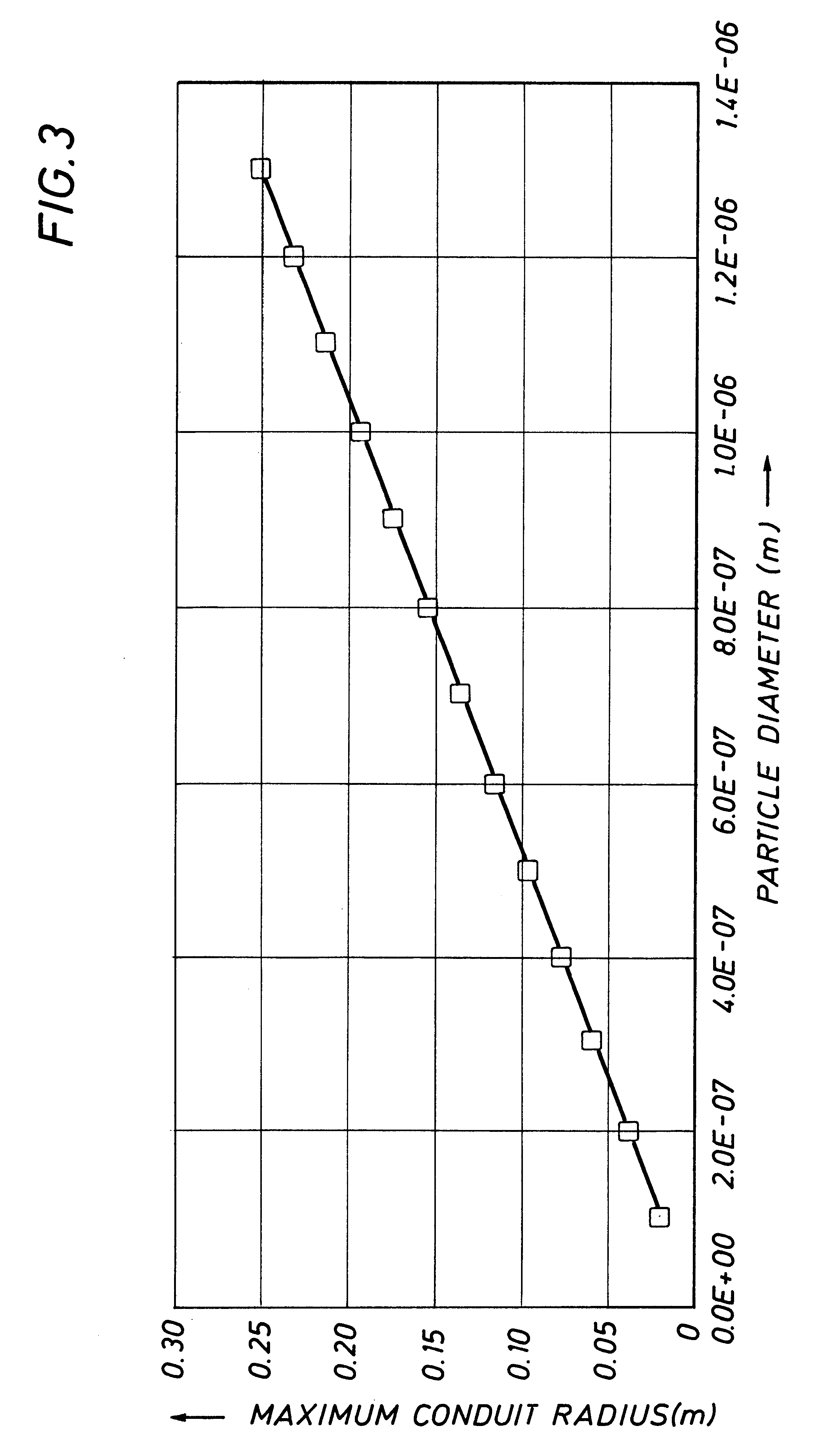Removing solids from a fluid
a fluid and solids technology, applied in the direction of liquid degasification, auxillary pretreatment, separation processes, etc., can solve the problems of low separation efficiency, relatively high maintenance apparatus, and about five micron sized particles that can be separated by conventional cyclone separators
- Summary
- Abstract
- Description
- Claims
- Application Information
AI Technical Summary
Benefits of technology
Problems solved by technology
Method used
Image
Examples
second embodiment
In FIG. 2 is shown the device for carrying out the invention, the device having an open-ended tubular housing 23 with a Laval-type fluid inlet 25 at one end and a first outlet 27 for stream containing the solids and any condensed liquid at the other end of the housing. The flow-direction for fluid in the device is indicated by arrow 30. The housing has, from the inlet 25 to the liquid outlet 27, a primary substantially cylindrical part 33, a diverging diffuser 35, a secondary cylindrical part 37 and a diverging part 39. A delta-shaped wing 41 projects radially inward in the primary cylindrical part 33, the wing 37 being arranged at a selected angle to the flow-direction in the housing so as to impart a swirling motion to fluid flowing at supersonic velocity through the housing 23. A tube-shaped second outlet 43 for substantially gas extends through the first outlet 27 coaxially into the housing, and has an inlet opening 45 at the downstream end of the secondary cylindrical part 37. ...
example
A test apparatus for the present invention was prepared, and demonstrated for separating water vapor from air at ambient conditions. This apparatus and exemplary tests are described below, and this example along with application of Stokes law would demonstrate the application of the present invention as applied to separation of particles from a gas stream, either along with separation of condensable gases or without separation of condensable gases.
A test apparatus for the present invention was prepared, and demonstrated for separating water vapor from air at ambient conditions. FIG. 4 is referred to for the general configuration of the apparatus used.
In this example the air 425 is pressurized to 1.4 bar(abs.) by means of a blower 401 to provide pressurized air 426. After the blower the air is cooled to about 25 to 30.degree. C. by fin cooler 402, located in a vessel 418, and water 419 is sprayed into the vapor space below the cooler 420 to ensure that the air is near water saturatio...
PUM
| Property | Measurement | Unit |
|---|---|---|
| thickness | aaaaa | aaaaa |
| mean droplet diameter | aaaaa | aaaaa |
| throat diameter | aaaaa | aaaaa |
Abstract
Description
Claims
Application Information
 Login to View More
Login to View More - R&D
- Intellectual Property
- Life Sciences
- Materials
- Tech Scout
- Unparalleled Data Quality
- Higher Quality Content
- 60% Fewer Hallucinations
Browse by: Latest US Patents, China's latest patents, Technical Efficacy Thesaurus, Application Domain, Technology Topic, Popular Technical Reports.
© 2025 PatSnap. All rights reserved.Legal|Privacy policy|Modern Slavery Act Transparency Statement|Sitemap|About US| Contact US: help@patsnap.com



